How international law applies to attacks on nuclear and associated facilities in Ukraine
By George M. Moore | March 6, 2022
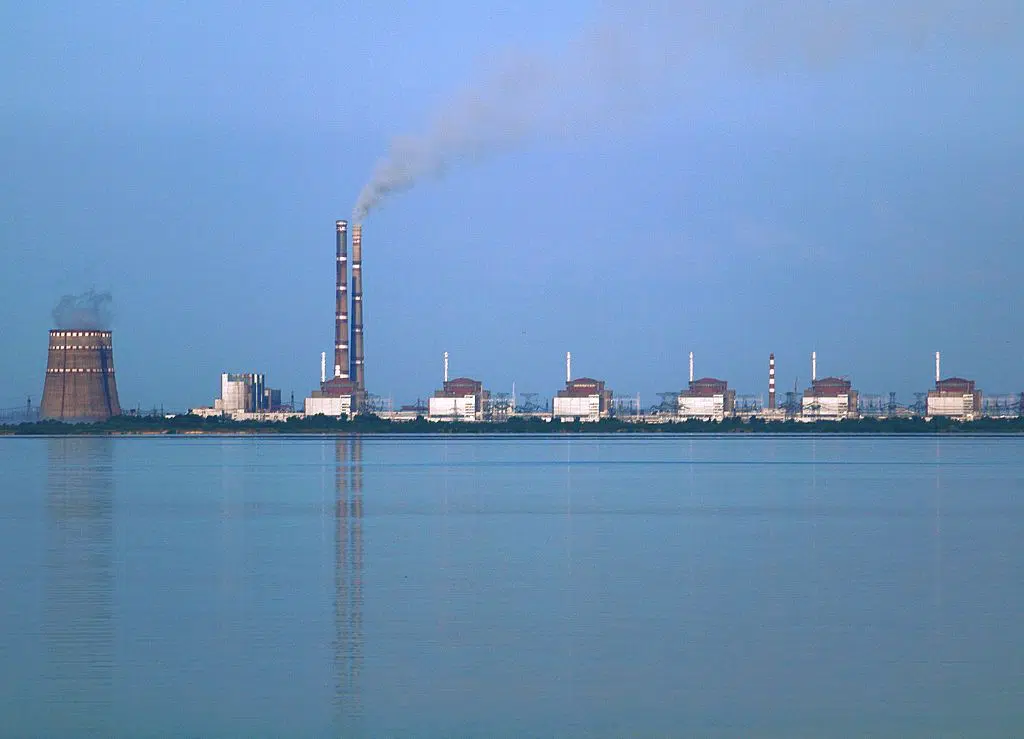 Zaporizhzhia nuclear power plant in southern Ukraine. The two tall smokestacks are at a coal-fired generating station about 3km beyond the nuclear plant. Photo credit: Ralf1969 via Wikimedia Commons.
Zaporizhzhia nuclear power plant in southern Ukraine. The two tall smokestacks are at a coal-fired generating station about 3km beyond the nuclear plant. Photo credit: Ralf1969 via Wikimedia Commons.
As the Russian invasion of Ukraine began to unfold, Russia’s swift occupation of the Chernobyl reactor complex and the surrounding exclusion zone sparked widespread speculation and concern.[1] The concern was not limited to whether the occupation would cause further radioactive release from Chernobyl;[2] it also included possible Russian military action against other Ukrainian nuclear facilities. These fears were further accelerated when Russian forces shelled and apparently occupied the Zaporizhzhia nuclear power complex near Enerhodar, Ukraine.[3] There have also been reports of attacks on a former Radon disposal site near Kyiv.[4]
World leaders have expressed concerns, and the UN Security Council held an emergency meeting on Friday to discuss the issue. At the meeting, the US ambassador told the emergency session that the assault on the Zaporizhzhia nuclear power plant “represents a dire threat to the world.” [5] The IAEA’s Board of Governors passed a resolution that deplored the Russian invasion and urged Russia to allow Ukraine to continue to control its nuclear facilities. The board’s resolution was similar to a UN General Assembly resolution passed on March 3rd.[6] Despite the high levels of concern the reactors at Zaporizhzhia do not appear to have been damaged and there has been no reported radiation release from the facility.
These attacks, however, may not be the end to the story. Ukraine possesses 15 nuclear reactors which provide 54 percent of its electrical power. Figure 1 below lists the current nuclear structure in Ukraine. All the current reactors in Figure 1 are Soviet/Russian VVER pressurized water reactors. These are similar to Westinghouse designed reactors in use throughout the world. In fact, several of Ukraine’s reactors have been augmented by Westinghouse in the post-Soviet era. These are modern reactors with containment vessels, unlike the RBMK–1000 reactors at Chernobyl, which had essentially no containment structure.

As can be seen in figure 2 below, the other three Ukrainian reactor complexes—at Rivne, Khmelnystkyi, and South Ukraine—are still outside Russian-occupied areas. This may change as Russian forces press their attacks, change attack vectors, or counterattacks occur; it should also be noted that all these facilities are subject to attack by aircraft or missiles.
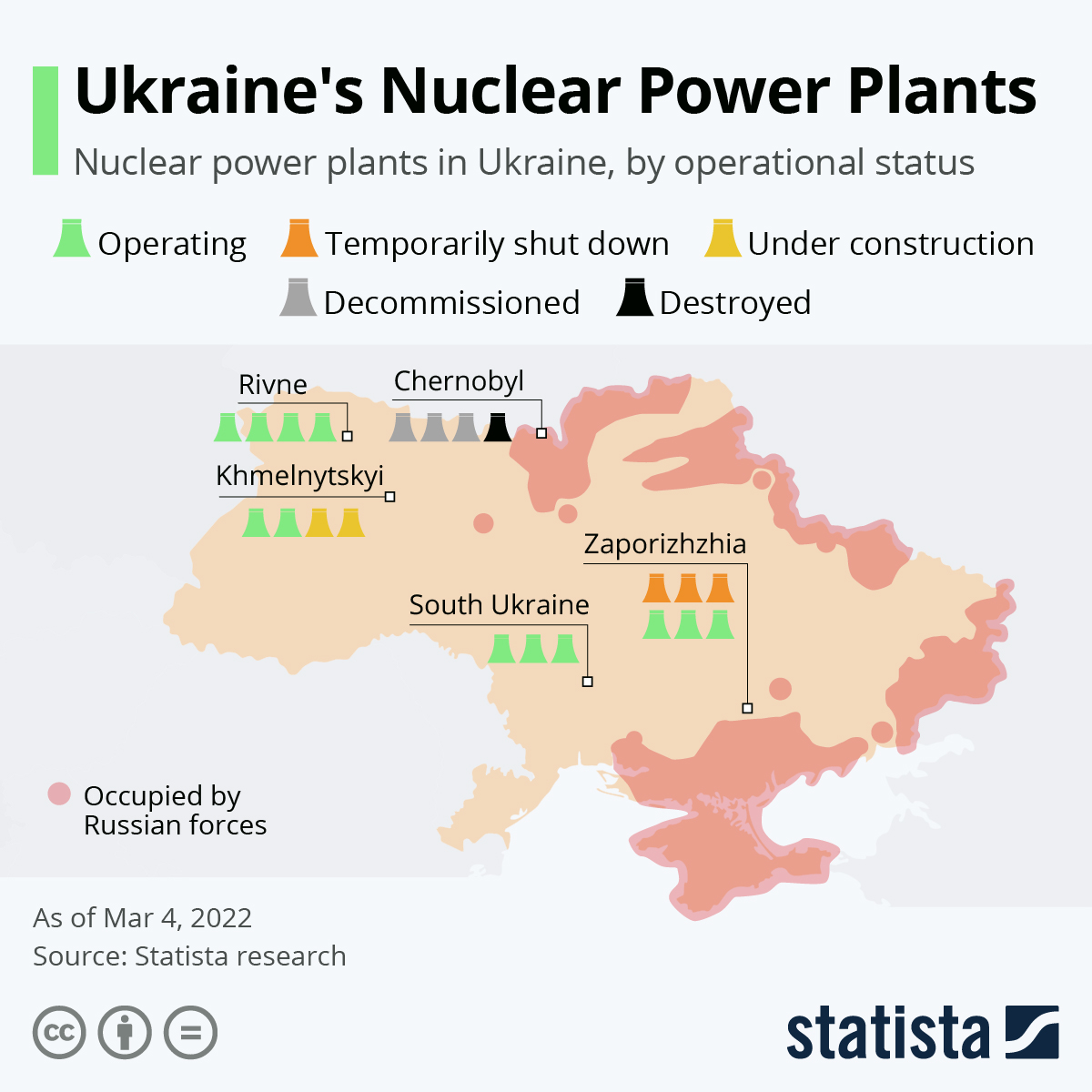
Although the issue of attacking reactor facilities has been considered for some time,[7] the international legal regime that addresses attacks on nuclear and associated facilities[8]—including those that have occurred in Ukraine—is not as clear cut as one might think. Still, protocols of the Geneva Conventions, the rules of International Humanitarian Law, and Russia’s own military regulations do prohibit the kinds of attacks that Russia made on the Zaporizhzhia nuclear power plant. The question of who would hold Russia to account for violations of these international norms is at best unresolved.
The international legal regime. The US Embassy in Ukraine has called the attack on the nuclear power plants at Zaporizhzhia a “war crime.”[9] Is this merely rhetoric supportive of the Ukrainian government, or an arguably correct analysis of international law derived from the international legal regime?
The international legal regime consists of treaties, agreements, and norms of conduct. International treaties are, of course, at the highest level of international law because they obligate their parties to the agreed commitments. But there are no existing treaties that deal specifically with nuclear power plants and the fuel storage and other facilities associated with them. So the expected international behavior must be found in other broadly agreed to frameworks and norms, and the situation is not clear cut.
There have been a surprising number of attacks on reactor facilities by state actors.[10] Probably the most well-known attacks were those undertaken by Israel. In 1981, Israel’s air force attacked the French-built Osirak reactor outside Baghdad based on its assessment that it was part of Iraq’s nuclear weapons program. The attack was condemned by the United States and many other nations.[11] Again in 2007 Israel’s air force struck a suspected nuclear reactor, this time in Syria.[12] In both cases the reactor was attacked prior to being fueled, and in the instance of the Syrian attack, Syria argued that what was attacked was not a reactor.
In 1991, during the Persian Gulf War, the United States attacked and damaged two Iraqi research reactors at the Tuwaitha complex near Baghdad, making the argument, like that made by Israel, that the attack was justified based on the assumption that the reactors were part of a nuclear weapons program.[13]
The Israeli attack in 1981 was condemned as an unlawful use of force under article 2 (4) of the United Nations charter using jus ad bellum (legal justifications for war). The US attacks were largely ignored as regards international law, since the overall attack on Iraq was pursuant to a UN resolution and e jus in bello (law of armed conflict) was considered to apply. Although an argument can be made that the attacks went beyond the reach of the UN resolution, there was no incentive to pursue a jus ad bellum analysis.[14]
At an elevated level of analysis, the two main principles relating to the making of war are discrimination and proportionality—whatever is done must be justified as a proportional response to a provocation and the response must discriminate between military and civilian targets, avoiding harm to civilian and non-military property if possible. Putting aside the argument of whether the Russian invasion itself violates one or both general principles, arguably all the Russian attacks on Ukraine’s nuclear and associated facilities violate both principles. The facilities that have been attacked are civil facilities[15] with only a tenuous tie to the Ukrainian military, and the attacks do not discriminate. Even if one accepts as valid the almost certainly untrue Russian “reasons” for attacking Ukraine—that the country is run by nazis and drug addicts, for one absurd example—there is no valid argument that attacks on nuclear and associated facilities are proportionate to any harm Russian may argue that Ukraine has done to it.
Surprisingly, in 1956, the International Red Cross (IRC) proposed an immunity from attack for installations, including “nuclear power stations,” where the attack might endanger civilian populations. The IRC push on this issue eventually led to Protocol I to the Geneva Conventions.
Article 56 of Protocol I reads as follows:[16]
Protection of works and installations containing dangerous forces
1. Works or installations containing dangerous forces, namely dams, dykes and nuclear electrical generating stations, shall not be made the object of attack, even where these objects are military objectives, if such attack may cause the release of dangerous forces and consequent severe losses among the civilian population. Other military objectives located at or in the vicinity of these works or installations shall not be made the object of attack if such attack may cause the release of dangerous forces from the works or installations and consequent severe losses among
the civilian population.
2. The special protection against attack provided by paragraph 1 shall cease:
(a) for a dam or a dyke only if it is used for other than its normal function and in regular, significant and direct support of military operations and if such attack is the only feasible way to terminate such support;
(b) for a nuclear electrical generating station only if it provides electric power in regular, significant and direct support of military operations and if such attack is the only feasible way to terminate such support;[17]
(c) for other military objectives located at or in the vicinity of these works or installations only if they are used in regular, significant and direct support of military operations and if such attack is the only feasible way to terminate such support.
3. In all cases, the civilian population and individual civilians shall remain entitled to all the protection accorded them by international law, including the protection of the precautionary measures provided for in Article 57 … . If the protection ceases and any of the works, installations or military objectives mentioned in paragraph 1 is attacked, all practical precautions shall be taken to avoid the release of the dangerous forces.
4. It is prohibited to make any of the works, installations or military objectives mentioned in paragraph 1 the object of reprisals.
5. The Parties to the conflict shall endeavour to avoid locating any military objectives in the vicinity of the works or installations mentioned in paragraph 1. Nevertheless, installations erected for the sole purpose of defending the protected works or installations from attack are permissible and shall not themselves be made the object of attack, provided that they are not used in hostilities except for defensive actions necessary to respond to attacks against the protected works or installations and that their armament is limited to weapons capable only of repelling hostile action against the protected works or installations.
6. The High Contracting Parties and the Parties to the conflict are urged to conclude further agreements among themselves to provide additional protection for objects containing dangerous forces.
7. In order to facilitate the identification of the objects protected by this article, the Parties to the conflict may mark them with a special sign consisting of a group of three bright orange circles placed on the same axis, as specified in Article 16 … of Annex I to this Protocol [Article 17 … of Amended Annex]. The absence of such marking in no way relieves any Party to the conflict of its obligations under
this Article.
The United States has consistently refused to ratify Protocol I and has steadfastly refused to accept inclusion of attacks on nuclear facilities in a radiological weapons convention.[18] However, the United States did sign Protocol I, which binds it to not violating the protocol while working towards ratification. The Russian Federation ratified the protocol then withdrew from Protocol I in 2019. Despite this, the ratification of over 170 states arguably makes this a valid international norm of behavior.
Protocol II of the Geneva Convention[19] also relates, albeit far more briefly, to attacks on nuclear and associated facilities. Article 15 of the Protocol—Protection of works and installations containing dangerous forces—reads as follows:
Works or installations containing dangerous forces, namely dams, dykes and nuclear electrical generating
stations, shall not be made the object of attack, even where these objects are military objectives, if such attack may cause the release of dangerous forces and consequent severe losses among the civilian population.
Once again, the United States has signed, but not ratified the protocol. Here the Russian Federation is still party to the protocol and its recent acts would appear on initial reflection to be in violation of Protocol II. However, Russian Federation would argue that it did not cause the release of dangerous forces and consequent severe losses among the civilian population, noting that the terms of Article 15 are vague and ambiguous (e.g., is one death a severe loss, is 100, etc.).
Beyond the protocols to the Geneva Convention, the rules of International Humanitarian Law, specifically Rule 42, apply to attacks on nuclear and associated facilities.[20] Rule 42 states that:
Particular care must be taken if works and installations containing dangerous forces, namely dams, dykes and nuclear electrical generating stations, and other installations located at or in their vicinity are attacked, in order to avoid the release of dangerous forces and consequent severe losses among the civilian population.
Rule 42 has been incorporated in military guidelines in a number of states, including the Russian Federation. It is interesting to note that:
The Russian Federation’s Military Manual (1990) states that is prohibited “to launch an attack against works or installations containing dangerous forces in the knowledge that such attack will cause excessive loss of life, injury to civilians or damage to civilian objects”. Russian Federation, Instructions on the Application of the Rules of International Humanitarian Law by the Armed Forces of the USSR, Appendix to Order of the USSR Defence Minister No. 75, 1990, § 8(h).[21]
Further, the Russian Federation’s Regulations on the Application of IHL (2001) states:
[E]specially dangerous objects are nuclear power stations, dykes, dams whose destruction may release dangerous destructive factors and consequent severe losses among the civilian population. These objects shall not become the object of attack even when they are military objectives if attacking them may result in the abovementioned consequences.
An especially dangerous object shall lose its immunity (status) if it provides regular, significant and direct
support for the enemy military operations (for dams and dykes, it is only possible if they are used for other
than their normal functions), moreover, if such an attack is the only feasible way to terminate such support.
Russian Federation, Regulations on the Application of International Humanitarian Law by the Armed Forces of the Russian Federation, Ministry of Defence of the Russian Federation, Moscow, 8 August 2001, § 1; see also § 30 (conduct of combat operations under special conditions).[22]
Finally, in a 1995 opinion, the Constitutional Court of the Russian Federation recognized Protocol II in the conflict with Chechnya. The court noted that domestic Russian legislation had yet to adopt Protocol II, but it stated that:
“Nevertheless, provisions of [the 1977 Additional Protocol II] regarding … protection … of … installations and structures containing dangerous forces … are binding on both parties to the armed conflict.” Russian Federation, Constitutional Court, Situation in Chechnya case, Judgment, 31 July 1995, § 5.[23]
The International Atomic Energy Agency (IAEA) has long recognized the need to prohibit armed attacks on all nuclear facilities. In 1987 the IAEA General Conference adopted a resolution regarding Protection of Nuclear Installations against Armed Attacks. Recognizing that grave consequences due to radioactive release could occur both within and outside the boundaries of the state being attacked, the IAEA was convinced that an international agreement should be reached on this issue.[24]
In summary: Although there are no treaties directly relating to attacks on nuclear and associated facilities, Protocols I and II of the Geneva Convention and the Rules of Humanitarian Law arguably prohibit such attacks and have created norms of international behavior that appear to have been, and are being, violated by Russian actions in Ukraine. It is noticeable that Russian Federation’s military seems to be violating its own doctrines, which incorporate the international norms to a great extent.
One must keep in mind, however, that for the most part treaties and international norms provide little or no ability to enforce their terms and concepts against parties in violation, particularly when the party in violation is a major state that is not subject to some sort of coercion or, for example, action against it by the UN Security Council or other collective bodies. Thus, it is highly doubtful that the Russian Federation will be restrained against further actions against nuclear power plants or other dangerous facilities in Ukraine by anything other than self-restraint, a possibility which seems to be highly improbable given the current state of Russian politics. Therefore, we need to consider the potential consequences of further Russian actions and options that Ukraine might exercise to minimize effects on the environment and its population.
Potential effects of Russian attacks. In the wake of the Russian invasion of Ukraine many articles have speculated on the potential consequences of attacks against Ukrainian nuclear and associated facilities. Many of these articles have failed to consider the types of reactors operating in Ukraine and have made numerous references to Chernobyl and Fukushima as realistic potential accident scenarios for attacks in Ukraine.
The VVER series of reactors used in Ukraine’s current fleet is probably most like the Westinghouse reactors pressurized water reactors (PWRs) that are in operation worldwide. Although the 3 Mile Island accident involved a Babcock & Wilcox PWR reactor, it is much more like the VVER reactors than either those at Chernobyl (an RBMK-1000 reactor without significant containment) or those at Fukushima (General Electric Boiling Water Reactors (BWRs).
Containment for the VVERs is heavily reinforced concrete. Although not impervious to artillery and missile attack, the outer containment shell will probably withstand significant pounding without being breached. High explosive warheads and projectiles would be largely ineffective against the outer containment, but shaped-charge warheads would increase penetration of it. Unfortunately, shaped charge projectiles are more likely to fired from tank and anti-tank weapons, where their intended purpose is to penetrate before detonating. Shaped charge technology or penetrator-type warheads may also be found in “bunker busting” air dropped ordnance. However, breaching the reactor’s containment shell does not directly lead to core damage, as the core itself is “potted” in concrete and encased in a thick stainless-steel pressure vessel. In summary, it would take a tremendous amount of effort (probably sustained and well targeted bombardment and/or precision penetrating munitions) to breach the outer containment and then breach the inner pressure vessel.[25]
Therefore, the primary damage risk is that the reactor system will be damaged in a manner that the reactor will carry out its own destruction. The primary mechanism by which this can occur is by the core losing coolant and melting or partially melting in a manner that the reactor creates its own breaching of the pressure vessel or primary containment, followed by a breach of the outer containment itself. This is what happened at Fukushima and what almost happened at 3 Mile Island.
The possibility of a serious accident, whether it is triggered by an attack or by an accident event, depends to a great extent on what power level the reactor is at when the accident or attack happens. Regardless of the initiating event. the reactor would almost always scram, and fission reaction would rapidly stop. However, the residual heat from fission products is still sufficient to melt the core (thereby creating the possibility of fuel rupture, melt, hydrogen explosions, etc.) without ongoing cooling. Loss of offsite power may be an additional compounding factor, but it is not dispositive (as it was at Fukushima where everything onsite was “dead”) and reactors can continue to run and safely shut down without it. Diesel generators and or offsite power (note that the Ukrainian reactors have multiple reactors onsite, so that another onsite reactor may provide power in addition to the potential power from emergency generators) are factors to be considered. But Fukushima-like losses of generators may be unlikely from anything less than a prolonged attack effort with ultimate destruction of a reactor as the goal.
If reactors in Ukraine were to be shut down and put in cold standby (a process in which the reactor is powered down and cooled to the point where it requires little coolant flow to remain below dangerous core temperature conditions), it would greatly reduce the potential for damage by attack. The 10-day independence war in Slovenia occasioned consideration of what would happen to the Krško reactor (which is similar in most respects to the Ukrainian reactors) in the event of an attack while in cold shutdown.[26] The authors of the Krško study concluded that for a reactor in cold standby there would be time available to restore cooling and that “consequences of a military attack to the plant by jet fighters could be serious, but with the proper preventive measures and preparedness the environmental consequences could be minimized.”[27]
Expecting Ukraine to shut down its reactors and put them in cold standby is somewhat improbable given the country’s dependence on nuclear energy. Therefore, it might be prudent for the European Union and the United States to think through what support could be offered to Ukraine (and the Russian Federation) if a reactor accident led to a significant radiation release, or whether any aid could quickly be provided post-attack that could prevent a significant radiation release.
Conclusions. It is unlikely that an attack by the Russian Federation on a VVER reactor, unless it purposefully set out to create overwhelming damage, could trigger a scenario that would result in a large number of immediate radiation-induced deaths. Fatalities at Chernobyl were due to high doses received by first responders; Fukushima, and 3 Mile Island resulted in no immediate deaths due to radiation. However, in each of these accidents some experts have predicted significant numbers of future cancer deaths and radiation-induced cancers, particularly thyroid cancer in children, as has been observed in exposures from Chernobyl.
Absent the driving force of burning graphite from the Chernobyl core, an attack on the VVERs would not likely result in widespread contamination on the scale of what occurred at Chernobyl. Note, however, that large economic consequences could result from an attack that seriously damaged a VVER. Significant economic loss and humanitarian impact would result even in the absence of fatalities and/or widespread contamination. The reactors themselves are billion-dollar investments and the loss would not result in a huge economic impact but would have a significant humanitarian cost from the loss of power production.
While the international legal system and international law provide norms that arguably forbid attacks like those already witnessed in Ukraine, the postwar international system will need to consider putting in place stronger legal measures and will need to consider how to enforce such measures.
Hopefully, the Russian military will follow its own guidance with regard to humanitarian law and exercise future self-restraint with regard to not attacking nuclear and associated facilities in Ukraine. If so, we may be past the current danger point.
Notes
[1] See, for example, “Russian Forces Capture Chernobyl Nuclear Power Plant, Says Ukrainian PM.” RadioFreeEurope RadioLiberty February 24, 2022. Available at: https://www.rferl.org/a/ukraine-invasion-russian-forces-chernobyl-/31721240.html
[2] There have been some reports that radiation levels near Chernobyl have increased slightly presumably due to disruption of soil by Russian vehicles.
[3] Jordan Williams “Attack on Ukraine nuclear power plant rattles Washington,” The Hill online Overnight Defense & National Security, March 4, 2022. Available at: https://thehill.com/policy/defense/overnights/596961-defense-national-security
[4] “Radioactive waste disposal site near Kyiv hit by airstrike,” BNO News online, February 26, 2022. Available at: https://bnonews.com/index.php/2022/02/radioactive-waste-disposal-site-kyiv-hit-by-airstrike/
[5] “Security Council debates Russian strike on Ukraine nuclear power plant,” UN News online, March 4, 2022. Available at: https://news.un.org/en/story/2022/03/1113302
[6] F. Murphy, “IAEA board ‘deplores’ Russian invasion of Ukraine, only two votes against,” Reuters online, March 3, 2022. Available at: https://www.reuters.com/world/europe/iaea-board-deplores-russian-invasion-ukraine-only-two-votes-against-2022-03-03/. The Board’s resolution was similar to a UN General Assembly resolution passed on March 3rd.
[7] See, for example, B. Ramberg, Nuclear Power Plants as Weapons for the Enemy: An Unrecognized Military Peril, University of California Press (1984). Electronic copy available at: https://books.google.com/books?hl=en&lr=&id=1TlOBHDKqLgC&oi=fnd&pg=PR9&dq=Nuclear+Power+Plants+as+Weapons+for+the+Enemy&ots=g3wKxb3bCp&sig=6ISbg9geJpRQNqtKX8fPjQK__s#v=onepage&q=Nuclear%20Power%20Plants%20as%20Weapons%20for%20the%20Enemy&f=true
[8] In this paper the International Atomic Energy Agency (IAEA) definition of a nuclear facility from the Nuclear Security Fundamentals document is used. See, Nuclear Security Series (NSS) Number 20, “Objective and Essential Elements of a States Nuclear Security Regime,” Vienna, 2013. The nuclear facility definition, “A facility (including associated buildings and equipment) in which nuclear material is produced, processed, used, handled, stored or disposed of and for which an authorization or license is required,” includes nuclear power plants, research reactors, disposal sites, etc. Note, however, that there are sites that may contain “other radioactive material,” which are not nuclear facilities. The term “associated facility” from NSS 20 is broader and describes facilities that contain either nuclear or other radioactive materials.
[9] “U.S. Embassy in Ukraine calls nuclear power plant attack ‘war crime,’” Reuters online, March 4, 2022. Available at: https://www.reuters.com/world/us-embassy-ukraine-calls-nuclear-power-plant-attack-war-crime-2022-03-04/
[10] Note that there have also been attacks against reactors by subnational terrorists or separatist groups, but these will not be considered here.
[11] D.K. Shipler, ISRAELI JETS DESTROY IRAQI ATOMIC REACTOR; ATTACK CONDEMNED BY U.S. AND ARAB NATIONS,” New York Times, June9, 1981. Available at: https://www.nytimes.com/1981/06/09/world/israeli-jets-destroy-iraqi-atomic-reactor-attack-condemned-us-arab-nations.html.
[12] “Israel admits striking suspected Syrian nuclear reactor in 2007,” BBC News, March 21, 2018. Available at: https://www.bbc.com/news/world-middle-east-43481803
[13] Carnahan, Burrus M. “Protecting Nuclear Facilities from Military Attack: Prospects after the Gulf War.” The American Journal of International Law 86, no. 3 (1992): 524–41 at 524-525. Available at: http://www.jstor.org/stable/2203966.
[14] Id. At 526.
[15] An argument can be made for any power plant, nuclear or not, that by using some electricity the military may be supported, but this is a relatively weak argument when there is a significant risk that the attack will create significant harm to the civilian population.
[16] Protocol Additional to the Geneva Conventions of 12 August 1949, and relating to the Protection of Victims of International Armed Conflicts (Protocol I), 8 June 1977. Article 56 Protection of Works and Installations Containing Dangerous Forces. Available at: https://ihl-databases.icrc.org/ihl/WebART/470-750071
[17] The US Department of Defense’s current desire for a small military reactor (see, A. Mehta “Portable nuclear reactor project moves forward at Pentagon,” DefenseNews, March 23, 2021. Available at: https://www.defensenews.com/smr/energy-and-environment/2021/03/23/portable-nuclear-reactor-project-moves-forward-at-pentagon/) would appear to create a reactor that could be attacked under Article 56.
[18] Id. At 532-533.
[19] Protocol Additional to the Geneva Conventions of 12 August 1949, and Relating to the Protection of Victims
of Non-International Armed Conflicts (Protocol II). Available at: https://www.ohchr.org/en/professionalinterest/pages/protocolii.aspx
[20] J-M. Henckaerts and L. Doswald-Beck, Customary International Humanitarian Law, Volume I: Rules. Chapter 13 “Works and Installations Containing Dangerous Forces. Pages 139-142. Available at: https://www.icrc.org/en/doc/resources/documents/publication/pcustom.htm
[21] Russian Federation Practice Relating to Rule 42. Works and Installations Containing
Dangerous Forces. Available at: https://ihl-databases.icrc.org/customary-ihl/eng/print/v2_cou_ru_rule42.
[22] Id.
[23] Id.
[24] M. ElBaradei, E. Nwogugu, J. Rhames, “International law and nuclear energy: Overview of the legal framework,” IAEA Bulletin 3/1995. Available at: https://www.iaea.org/sites/default/files/37302081625.pdf The text of the resolution (GC(XXXI)/RES/475) can be found at: https://inis.iaea.org/collection/NCLCollectionStore/_Public/40/082/40082631.pdf?r=1&r=1
[25] Note that the spent fuel pond at a reactor may be a softer target and can also be a source of contamination if the pool is loaded and cooling is disrupted.
[26] A. Stritar, B. Mavko, “Vulnerability of the Nuclear Power Plant in War Conditions,” First Meeting of the Nuclear Society of Slovenia, Bovec, Slovenia 1992. Pp 146-153. Available at: https://www.osti.gov/etdeweb/servlets/purl/20892171
[27] Id. At 152.
Together, we make the world safer.
The Bulletin elevates expert voices above the noise. But as an independent nonprofit organization, our operations depend on the support of readers like you. Help us continue to deliver quality journalism that holds leaders accountable. Your support of our work at any level is important. In return, we promise our coverage will be understandable, influential, vigilant, solution-oriented, and fair-minded. Together we can make a difference.



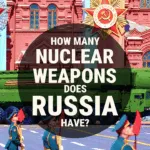
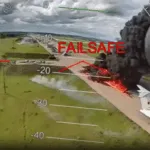


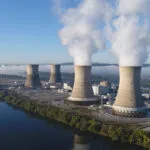



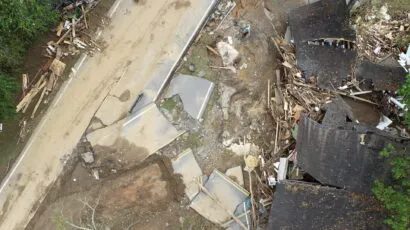
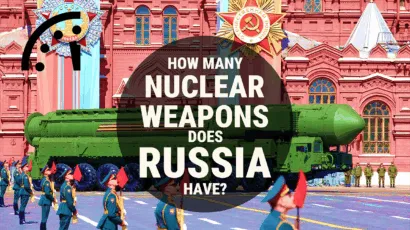
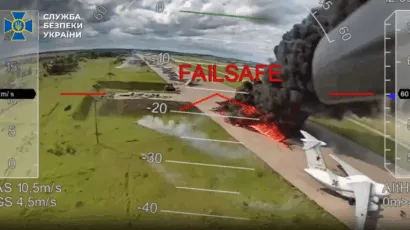

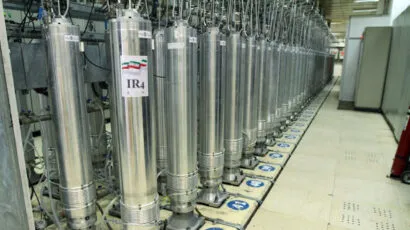
Thanks for the really interesting article. Just to clarify a couple of legal issues. Russia hasn’t withdrawn from the 1977 Additional Protocol I, just its recognition of an international fact-finding commission that could be used to clarify facts in an international armed conflict. Russia thus remains bound in full by the Protocol and you cite the relevant article (which greatly restricts but does not prohibit attacks on nuclear power plants). The 1977 Additional Protocol II applies to certain armed conflicts between a State and an organised armed group so it does not apply to the international armed conflict between the… Read more »
The IAEA (https://www.iaea.org/) have a very robust framework and requirements about the design of a nuclear power plant. They even require assessment of a direct missile or big airplane direct hit into the reactor building.The requirement is the reactor containment building to be able to survive such a hit without damages.
See:
NSS No. 4 Engineering Safety Aspects of the Protection of Nuclear Power Plants against Sabotage(https://nucleus-apps.iaea.org/nss-oui/Content/Index?type=PublishedCollection&collectionid=m_857d8a71-379d-46f9-99c1-39780c8ebf42&SearchText=Aircraft%20impact%20assessment#c_93923e0f-b050-453a-9554-a63421ed51c6)
Also here for the USA requirements: https://www.nrc.gov/reading-rm/doc-collections/cfr/part050/part050-0150.html
I haven’t seen this fact mentioned anywhere.